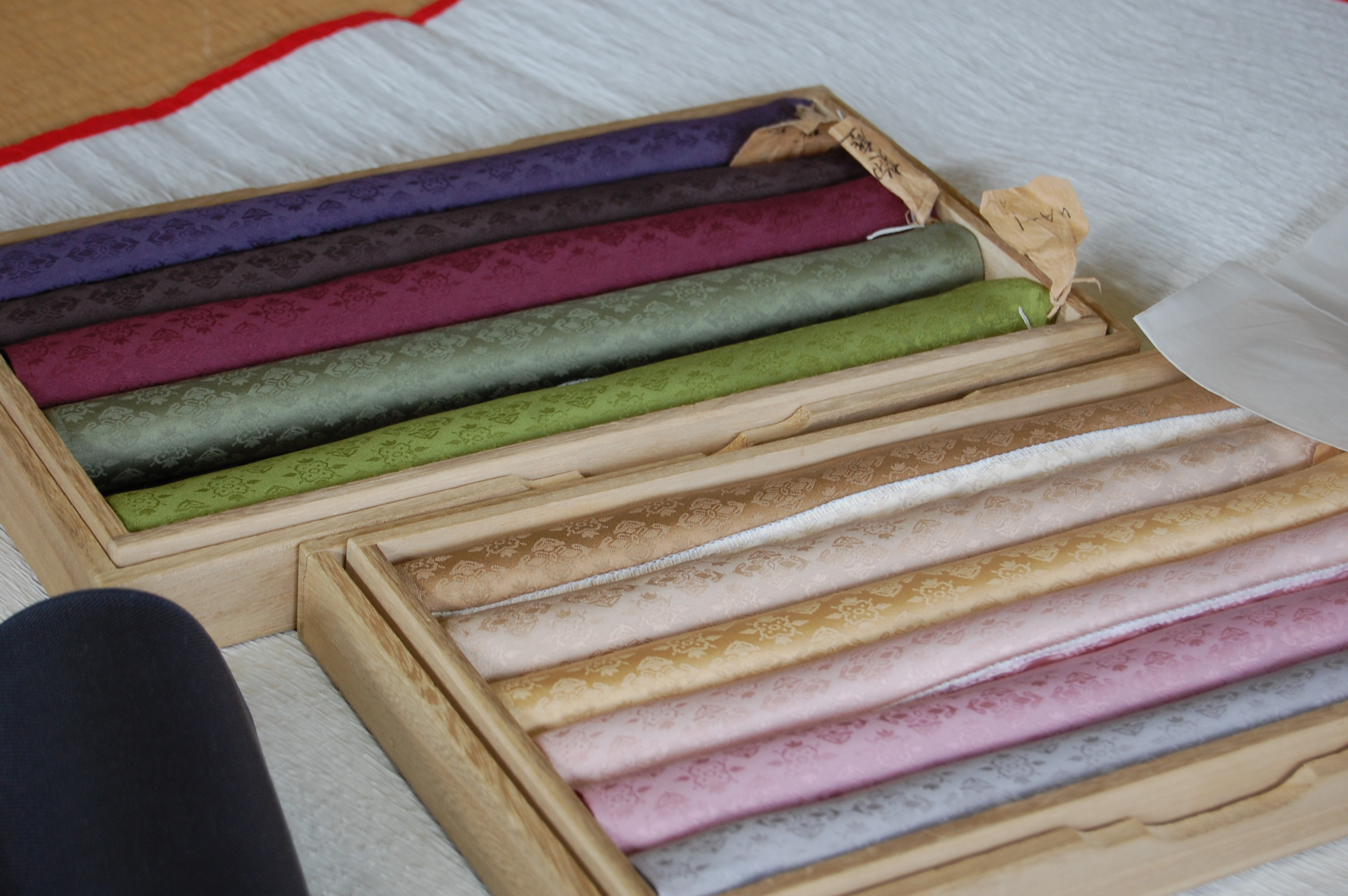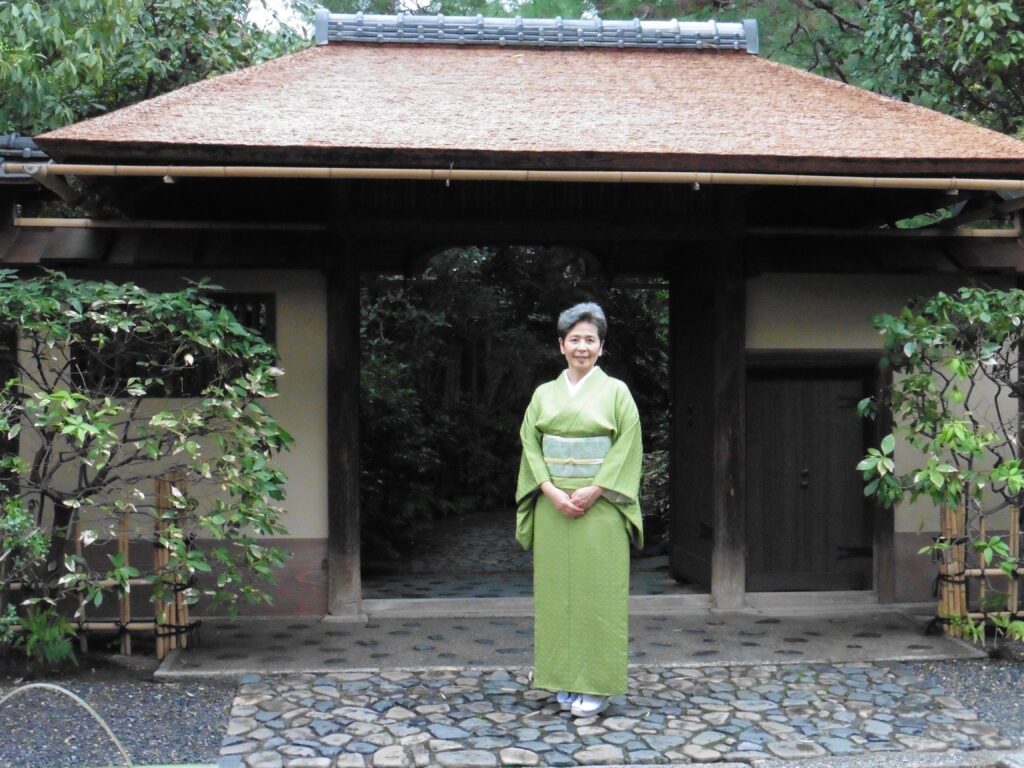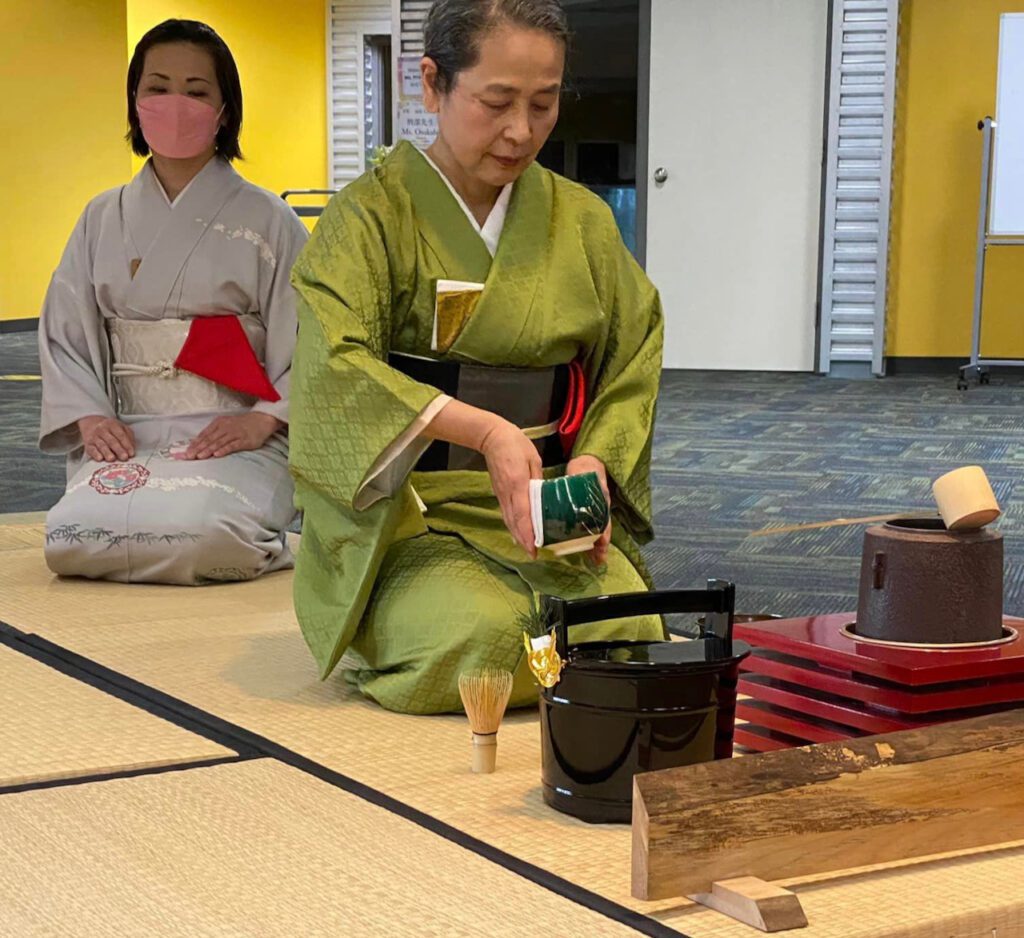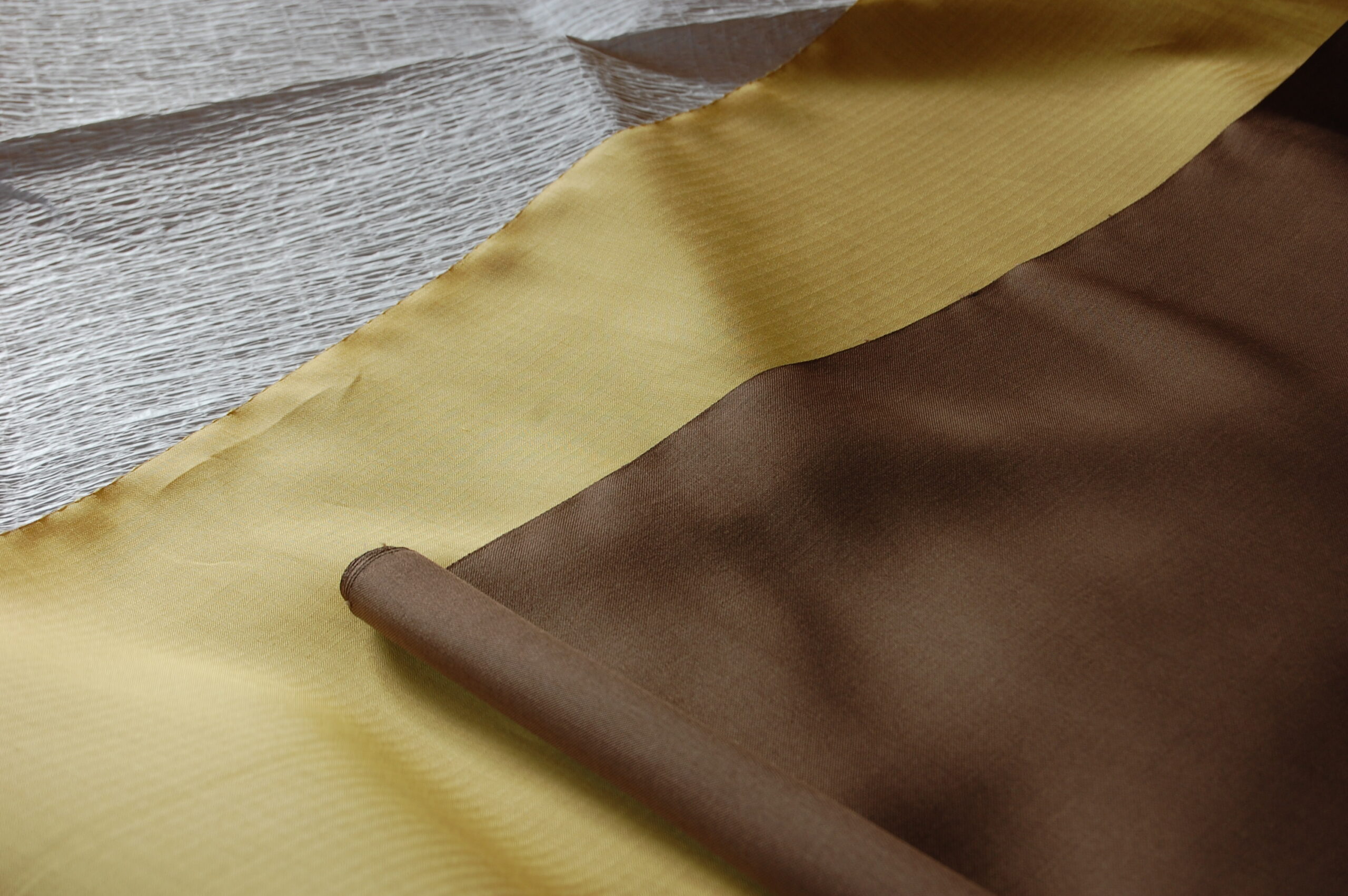Because my red carpet is the tea room.
After explaining to me how Katsuyama-san and Shimura-san worked together to make the soft silk threads I was touching, Reiko-san brought boxes from the stack and opened them one by one, taking out rolls of sample kimono fabrics.
The first batch (photo above) was all hand-woven in Nagano, where Shimura-san lives and works, then brought here.
Ancient Japanese used to describe an extremely soft and light fabric as “Tennyo no Hagoromo 天女の羽衣,” as if a nymph would wear it. Their lightness and softness… These fabrics reminded me of this expression.

Photo by Author Akemi Sagawa
The second group in a sample size (photo above) was housed in smaller boxes. They were also made from Shiomayu (salted cocoon) silk. The difference from the first group was: they were machine-woven, and they had woven patterns.

Reiko-san let me look at, touch, and feel all the fabrics, even allowing me to drape them over my shoulders as if I were wearing them.
As much as I wished to feel like a nymph by wearing the first group, I selected the second group. Why?
My utmost purpose of having my own kimono made, was to wear it at the tea gathering scheduled in Kyoto.
On November 19 every year, Urasenke, the headquarters of our tea ceremony group, holds a gathering commemorating the passing of the third-generation grandmaster Sotan 宗旦 (1578 – 1658). Following this event, one of the Urasenke overseas groups has the privilege to participate in a full day of special training sessions taught by master teachers in Kyoto. In 2016, it was the Urasenke Seattle group’s turn. Such an opportunity would come maybe once in a decade at most.
If the tea ceremony training sessions were like garden parties, the first group of kimono fabric would have been ideal.
The reality is far from it. All day long, you stand up, walk, sit down, and keep sitting on your knees for minutes – and you repeat them again and again. You may also kneel forward or backward, depending on how large the tea room is.
For my tea training sessions, I also needed durability as well as beauty, and the second group’s fabrics were more suitable. Also, the woven pattern hides possible spots or stains better.

Photo: Property of Author Akemi Sagawa
Out of many colors, my natural choice was, Matcha green!

Photo: Author in Shiomayu Kimono, in front of Kabuto-mon. Property of Author Akemi Sagawa
The training session was an unforgettable experience. Ever since then, this kimono has accompanied me in various special occasions, such as the New Year’s tea gathering this year.

Photo: Property of Author Akemi Sagawa

Photo: Property of Author Akemi Sagawa
For me, the red carpet is the tea room.
